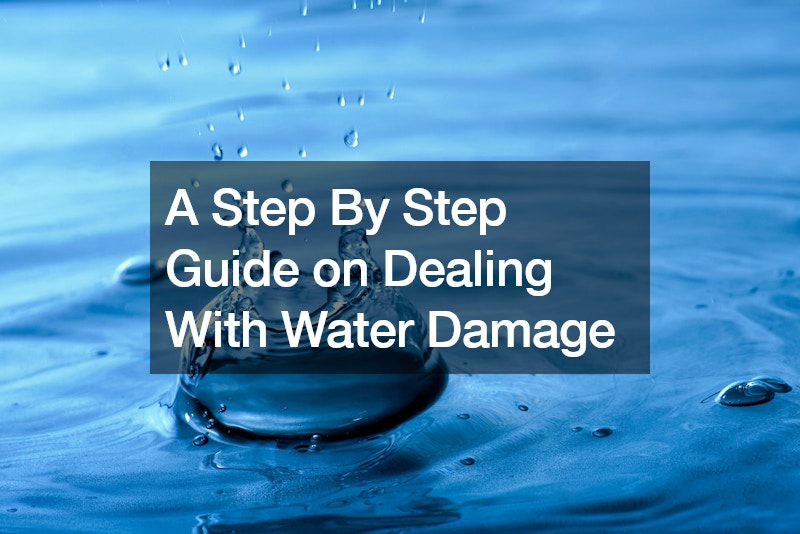
Introduction
Welcome to our comprehensive guide on dealing with water damage in your home. Whether it’s from a burst pipe, leaking roof, or flooding, water damage can be a stressful and overwhelming experience. In this guide, we will provide you with step-by-step instructions on how to handle water damage like a pro.
Water damage is not just a nuisance; it can cause significant structural damage to your home and pose health risks to you and your family. From weakening foundations to promoting mold growth, the consequences of water damage can be long-lasting and costly. However, with the right knowledge and action plan, you can effectively manage water damage and minimize its impact on your property. Prioritize mold removal.
Understanding the importance of quick and efficient response to water damage is crucial. Acting promptly can help prevent further damage, reduce restoration costs, and ensure the safety and well-being of your household. By following the steps outlined in this guide, you’ll be equipped with the tools and strategies needed to navigate through the challenges of water damage restoration successfully.
Assess the Situation

When facing water damage, the first step is to assess the situation calmly and thoroughly. Take a moment to determine the source of the water damage. Is it from a burst pipe, a leaking roof, or external flooding? Understanding the source will help you strategize your next steps effectively. Once you’ve identified the source, evaluate the extent of the damage. Is it confined to a small area or has it spread throughout your home? Understanding the scale of the damage will help you plan your response accordingly.
In addition to identifying the source and extent of the damage, it’s essential to consider any potential hazards or safety risks associated with the water damage. Standing water can create slippery surfaces and electrical hazards, while prolonged exposure to moisture can promote mold growth and compromise indoor air quality. Prioritizing safety measures during the assessment process is paramount to protect yourself and your loved ones from harm.
Contact a Water Damage Pro
After assessing the situation, it’s crucial to contact water damage companies as soon as possible. Research and find reputable storm damage restoration companies in your area. Look for companies with experience and expertise in handling various types of water damage situations. Getting multiple estimates for the restoration work is advisable to ensure you’re getting fair pricing and comprehensive services. Ask for references and check reviews from previous clients to gauge the quality of their work. Remember, you want to work with a company that you can trust to restore your home effectively.
Working with commercial property water remediation companies not only ensures that the restoration process is handled efficiently but also provides you with expert guidance and support throughout the entire process. These professionals have the necessary equipment, skills, and experience to assess the damage, develop a tailored restoration plan, and execute the necessary repairs and remediation efforts. By entrusting your home to qualified professionals, you can have peace of mind knowing that your property is in good hands and that the restoration process will be completed to the highest standards.
Take Immediate Action

Once you’ve contacted a water damage professional, it’s time to take immediate action to mitigate further damage. Start by removing standing water from the affected area using pumps, vacuums, or buckets. The longer water sits, the more damage it can cause, so don’t delay in this step. Begin drying out the affected area using fans, dehumidifiers, and opening windows to promote airflow. Mitigate further damage by removing wet items such as furniture, carpets, and personal belongings from the affected area. It’s essential to act quickly to prevent mold growth and structural damage.
In addition to removing standing water and drying out the affected area, it’s crucial to document the damage for insurance purposes. Take photos and videos of the water damage, making sure to capture the extent of the damage from multiple angles. Create a list of damaged items, including their value and any relevant details for insurance claims. Keeping detailed documentation will streamline the insurance claims process and help ensure that you receive fair compensation for your losses. Remember, every step you take in the immediate aftermath of water damage can make a significant difference in the outcome of the restoration process.
Document the Damage
As you begin the restoration process, document the damage for insurance purposes. Take photos and videos of the water damage, making sure to capture the extent of the damage from multiple angles. Create a list of damaged items, including their value and any relevant details for insurance claims. Keep all receipts related to the restoration process, including invoices from water damage professionals and receipts for equipment rentals or purchases. This documentation will be essential when filing a claim with your insurance company.
Effective documentation serves as a critical tool in ensuring that you receive fair compensation from your insurance provider. By providing clear evidence of the damage incurred, including photographs, videos, and itemized lists, you strengthen your case and increase the likelihood of a successful insurance claim. Additionally, keeping detailed records of expenses related to the restoration process allows you to track your financial investment and seek reimbursement for eligible costs. Remember to communicate openly and transparently with your insurance company throughout the claims process, providing them with the necessary documentation and information to expedite the resolution of your claim.
Communicate with Your Insurance Company

Contact your insurance provider to file a claim as soon as possible. Provide necessary documentation and information to support your claim, including photos, videos, and itemized lists of damaged items. Understand your coverage and policy limitations to ensure you receive the maximum compensation for your losses. Your insurance company may also provide guidance on next steps and recommend preferred vendors for water damage restoration.
Maintaining open lines of communication with your insurance company is essential throughout the claims process. Be proactive in providing any additional documentation or information requested by your insurer, and stay informed about the status of your claim. If you encounter any challenges or discrepancies during the claims process, don’t hesitate to escalate the issue to a supervisor or seek assistance from a public adjuster. Remember, your insurance policy is designed to protect you in times of need, and your insurer has a responsibility to fulfill the terms of your policy. By advocating for yourself and staying engaged in the claims process, you can ensure a fair and timely resolution to your claim.
Prevent Mold Growth
One of the most significant risks associated with water damage is mold growth. To prevent mold from spreading, ensure proper ventilation in the affected area. Use dehumidifiers to control humidity levels and remove excess moisture from the air. Consider hiring a mold remediation specialist to assess the extent of the mold growth and implement effective removal strategies. Mold can pose serious health risks, so it’s essential to address it promptly and thoroughly.
In addition to addressing existing mold growth, it’s crucial to take proactive measures to prevent future mold infestations. Regularly inspect your home for signs of moisture and address any leaks or water intrusion promptly. Keep indoor humidity levels below 60% to discourage mold growth, and consider investing in moisture-resistant building materials for areas prone to water damage. By implementing these preventive measures, you can protect your home and your health from the harmful effects of mold. Remember, prevention is always better than cure when it comes to mold growth.
Repair and Restore the Damaged Area

Once the affected area is dry and free from mold, it’s time to repair and restore the damage. Replace damaged drywall, flooring, or carpets as needed to restore the structural integrity of your home. Painting and sealing surfaces can prevent future water damage and ensure a clean, finished appearance. Inspect and repair any structural damage, such as damaged roofs or compromised foundations, to prevent future issues. You may need to look into roofing installations. Regularly monitor the area for signs of water damage and address any leaks or moisture buildup promptly to avoid further damage.
Repairing and restoring the damaged area is a crucial step in the water damage restoration process. It not only restores your home to its pre-damaged condition but also helps prevent future issues and maintain the value of your property. Hiring a qualified residential contractor or restoration specialist ensures that the repairs are done correctly and to industry standards. They have the expertise and equipment necessary to complete the restoration work efficiently and effectively, minimizing disruptions to your daily life.
Consider Water Damage Prevention Measures
In addition to addressing current water damage issues, it’s essential to consider preventive measures to avoid future problems. Installing a sump pump for basement water control can prevent flooding during heavy rains or snowmelt. Upgrading to water-resistant building materials, such as waterproof drywall and flooring, can minimize damage in the event of future water intrusion. Implementing proper drainage systems around your home can redirect water away from the foundation and prevent basement flooding. Look into basement waterproofing services. By taking proactive measures, you can reduce the risk of water damage and protect your home for years to come.
Investing in water damage prevention measures is an investment in the long-term health and safety of your home. By addressing potential vulnerabilities and implementing preventive strategies, you can minimize the risk of costly water damage incidents and avoid the hassle of extensive repairs and restoration. Regular maintenance and upkeep of these preventive measures are essential to ensure their effectiveness over time. By staying proactive and vigilant, you can safeguard your home against water damage and enjoy peace of mind knowing that you’ve taken steps to protect your most significant investment. Talk to general contractors.
Stay Informed and Educated
Finally, staying informed and educated about water damage prevention strategies and techniques is essential. Attending workshops or seminars on water damage prevention allows you to learn from experts in the field and stay up-to-date with the latest developments. Keeping abreast of the latest technologies in water damage restoration, such as advanced drying techniques and moisture detection tools, ensures that you have access to the most effective solutions for your home. Sharing your knowledge and experience with others in your community can also help raise awareness and promote proactive measures to prevent water damage.
Education is key to effective water damage prevention. By understanding the causes and consequences of water damage, you can take proactive steps to protect your home and minimize the risk of costly repairs and restoration. By staying informed and educated, you empower yourself to make informed decisions and take proactive measures to safeguard your home against water damage. Remember, knowledge is power when it comes to protecting your home and your family from the devastating effects of water damage. Look into wet basement solutions.
Conclusion
By following these step-by-step guidelines and working with water damage professionals, you can effectively deal with water damage in your home and minimize the impact on your property and belongings. Remember, quick action is key when it comes to water damage restoration. Don’t hesitate to assess the situation, contact professionals, and take immediate action to mitigate further damage. With proper planning and preventive measures, you can safeguard your home against water damage and enjoy peace of mind knowing that you’re prepared for any water-related emergencies. A local general contractor can help.
In conclusion, dealing with water damage can be daunting, but it doesn’t have to be overwhelming. By taking a systematic approach and following the steps outlined in this guide, you can navigate through the challenges of water damage restoration with confidence and efficiency. Remember to assess the situation calmly, contact reputable professionals, and take immediate action to mitigate further damage. Documenting the damage for insurance purposes, communicating effectively with your insurance company, and implementing preventive measures are essential components of a successful restoration process.
Furthermore, don’t underestimate the importance of staying informed and educated about water damage prevention strategies and techniques. By attending workshops, seminars, and staying up-to-date with the latest developments in water damage restoration, you empower yourself to protect your home and your family from the devastating effects of water damage. Share your knowledge and experience with others to help them safeguard their homes against water damage and minimize the risk of costly repairs and restoration.
In the end, dealing with water damage is a challenge, but it’s one that can be overcome with the right knowledge, preparation, and action. By following the advice outlined in this guide and working with trusted professionals, you can restore your home to its former glory and ensure the safety and well-being of your family for years to come. Remember, water damage restoration is not just about fixing the physical damage to your property; it’s about restoring peace of mind and reclaiming your sense of security in your home.



